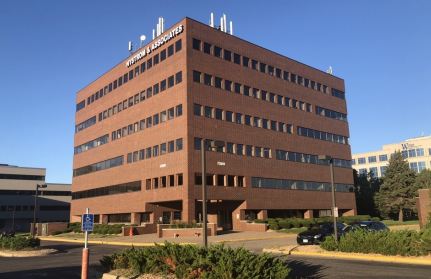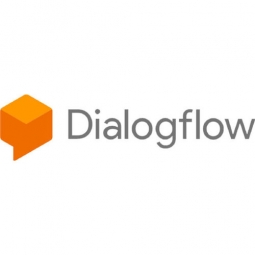Technology Category
- Analytics & Modeling - Machine Learning
- Analytics & Modeling - Natural Language Processing (NLP)
Applicable Industries
- Cement
Applicable Functions
- Procurement
Use Cases
- Chatbots
- Machine Translation
About The Customer
Founded in 1960, Domino’s is a global pizza restaurant chain operating over 14,000 restaurants in more than 85 countries. Their drivers cover over 10 million miles to deliver more than 10.5 million pizzas each week in the United States alone. Domino’s has been a pioneer in digital innovation in the food industry, being one of the first to launch an artificially intelligent voice-ordering assistant through their native apps. The company is committed to staying ahead of customer expectations and continually innovating to improve the customer experience.
The Challenge
Domino’s, a global pizza restaurant chain, has been at the forefront of digital innovation, offering customers the ability to order pizzas via 'Dom', an ordering bot available online and through the company’s mobile apps. However, with the changing consumer behavior and the need to innovate, the company faced the challenge of building rich conversational experiences powered by natural language understanding (NLU) and machine learning. The company needed a solution that could scale and accommodate the number of intents needed for a complex ordering process. The challenge was to account for the numerous directions a customer could take when ordering from their extensive menu.
The Solution
Domino’s began exploring various NLU solutions in August 2016 and ultimately chose Dialogflow for its scalability and ability to accommodate the number of intents needed. Dialogflow’s user-friendly and intuitive interface was another key factor in their decision. Leveraging their 50+ years of customer service knowledge and Dialogflow’s NLU capabilities, Domino’s was able to build both simple customer interactions and increasingly complex ordering scenarios. The project scope was larger than expected, but Domino’s managed to create a solid customer experience. Now, anyone using a device with the Google Assistant built in, such as a Google Home, can order from Domino’s with a simple voice command.
Operational Impact

Case Study missing?
Start adding your own!
Register with your work email and create a new case study profile for your business.
Related Case Studies.

Case Study
System 800xA at Indian Cement Plants
Chettinad Cement recognized that further efficiencies could be achieved in its cement manufacturing process. It looked to investing in comprehensive operational and control technologies to manage and derive productivity and energy efficiency gains from the assets on Line 2, their second plant in India.

Case Study
Digital Transformation of Atlanta Grout & Tile: An IoT Case Study
Atlanta Grout & Tile, a Tile, Stone & Grout restoration company based in Woodstock, Georgia, was facing challenges with its traditional business model. Despite steady growth over the years, the company was falling behind the web revolution and missing out on the opportunity to tap into a new consumer base. They were using independent software from different vendors for each of their department information and workforce management. This resulted in a lot of manual work on excel and the need to export/import data between different systems. This not only increased overhead costs but also slowed down their response to clients. The company also had to prepare numerous reports manually and lacked access to customer trends for effective business decision-making.

Case Study
Revolutionizing Construction Equipment Rental: A Case Study on ProsRent and ENO8
ProsRent, a startup that won the 'Best Financial Opportunity' and 'Best Pitch' at CodeLaunch 2016, aimed to revolutionize the way construction professionals source and rent heavy equipment. In the construction industry, project managers and contractors typically rent heavy equipment from supply companies. However, predicting inventory can be challenging, and finding the required equipment at the right time and place can be a hassle. If the preferred vendor doesn't have the required equipment, it results in wasted time and money in searching for it, often leading to higher costs due to non-preferred rates and increased delivery costs if the vendor is located far from the job site. Suppliers, on the other hand, desired access to a wider base of trusted renters that they didn't have to vet themselves and wanted to offer dynamic rental pricing based on demand and availability in their market. ProsRent's challenge was to produce a minimum viable product that was fast and first to market but also strong enough to engender loyalty and repeat business from the target market.

Case Study
IoT Solution Enhances Comfort and Energy Efficiency at Apple Valley Commons Office
Apple Valley Commons, a mixed-use office complex built in 1986, was facing significant comfort and energy efficiency challenges. The building, which houses a variety of businesses, was experiencing extreme temperature imbalances, causing discomfort to employees and clients. Despite outdoor temperatures being consistently high during summers, occupants had to use space heaters to keep warm. The electricity bills from the constant operation of the heat pump were exorbitant. The building's elevator room on the roof was also overheating, reaching temperatures of 130 to 140 degrees, causing the elevator equipment to shut down. The building's existing controls solution did not provide a front end for diagnostics or remote control. The building management was seeking a solution that could address these temperature issues, improve occupant comfort, reduce operational costs, and increase building visibility.

Case Study
Revamping EE's Legacy ERP: A Case Study on BT's Strategic Transformation
EE, even after its merger with BT, was operating its ERP estate on legacy infrastructure, hosted on the premises of a third-party supplier. This outdated system resulted in a volume-based operational model, higher time to market, longer delivery cycles, and unsatisfactory customer experience. BT recognized the need for a strategic transformation of these aging ERP systems and sought a partner who could proactively manage application services. The partner was also expected to handle development requirements associated with application management services, drive accountability, and ownership with a time and target-driven transformation of these services. BT's primary goals were to improve customer experience, reduce cycle time, and measure these improvements with precision.







